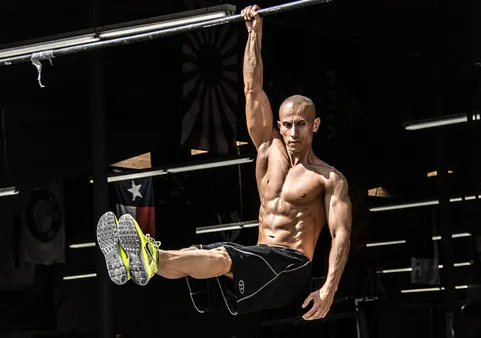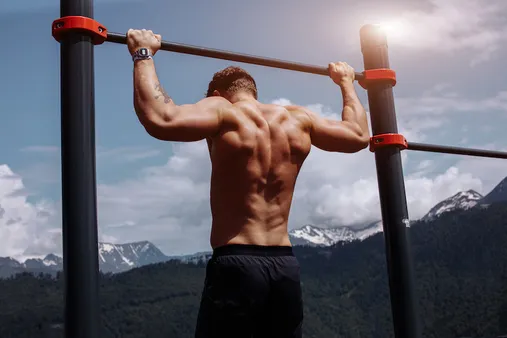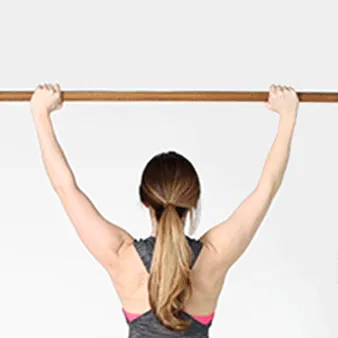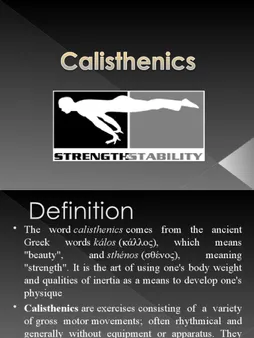Table of Contents
Calisthenics is a form of exercise that uses bodyweight movements to improve strength, flexibility, and endurance. It is a great way to get in shape without having to go to the gym or buy expensive equipment. Calisthenics exercises can be done anywhere, making it a convenient and accessible form of exercise. If you are looking for a challenging and effective way to improve your fitness, calisthenics is a great option. Kizworld offers a variety of calisthenics programs and resources to help you get started.
A Comprehensive Definition of Calisthenics: Embark on a Holistic Fitness Journey
I. Key Takeaways
Section | Key Takeaway |
|---|---|
Definition | Calisthenics are bodyweight exercises that use movements like jumping, pushing, pulling, and squatting to improve strength, endurance, and flexibility. |
History | Calisthenics have been around for centuries. They were first used by ancient Greek soldiers to improve their fitness and stamina. |
Benefits | Calisthenics provide several benefits, including increased strength, endurance, flexibility, and balance. They can also improve mood and reduce stress. |
Types | There are three main types of calisthenics: gymnastic, bodyweight, and weighted calisthenics. Each has its own advantages and complexities. |
How to do | To perform a simple calisthenics workout, start with basic exercises like push-ups, squats, and jumping jacks. Gradually increase the difficulty of the exercise over time. |
Sample Workout | Sample calisthenics workout includes exercises such as burpees, pull-ups, and plyometrics. These exercises target different muscle groups and can help improve overall fitness. |
Safety tips | To avoid injuries when performing calisthenics, focus on proper exercise form, gradually increase intensity and difficulty, do exercises in a controlled motion, and always warm up and cool down. |
II. What is Calisthenics?
Definition of Calisthenics
Calisthenics are a form of bodyweight exercises that use movements like jumping, pushing, pulling, and squatting to improve strength, endurance, and flexibility. They are often performed in a circuit, with little or no rest between exercises. Calisthenics can be done anywhere, making them a convenient and accessible way to get fit.How to Do a Muscle Up
Benefits of Calisthenics
Calisthenics offer a number of benefits, including:
- Increased strength
- Improved endurance
- Enhanced flexibility
- Reduced body fat
- Improved balance and coordination
- Reduced risk of injury
The Best Calisthenics Gifts and Accessories
Types of Calisthenics Exercises
There are many different types of calisthenics exercises, including:
- Push-ups
- Pull-ups
- Squats
- Lunges
- Burpees
- Planks
- Dips
- Handstands
The Best Calisthenics Quotes and Motivation
Exercise | Benefits |
|---|---|
Push-ups | Strengthens the chest, shoulders, and triceps |
Pull-ups | Strengthens the back, biceps, and forearms |
Squats | Strengthens the legs, glutes, and core |
What is Calisthenics?
III. Benefits of Calisthenics
Improved Physical Fitness
Calisthenics exercises engage multiple muscle groups simultaneously, leading to improved strength, endurance, and flexibility. They can help you develop a lean and toned physique, as well as enhance your overall fitness levels.How to Do a Muscle Up
Benefit | Description |
|---|---|
Increased Strength | Calisthenics exercises help build muscle strength by challenging your muscles against your own body weight. |
Improved Endurance | Calisthenics exercises can improve your endurance by increasing your cardiovascular fitness and muscular stamina. |
Enhanced Flexibility | Calisthenics exercises often involve dynamic movements that stretch and lengthen your muscles, improving your flexibility. |
Improved Mental Health
In addition to physical benefits, calisthenics can also have a positive impact on your mental health. Exercise in general has been shown to release endorphins, which have mood-boosting effects. Calisthenics, in particular, can help improve your self-confidence and body image, as you witness your own progress and accomplishments.The Best Calisthenics Gifts and Accessories
- Reduced Stress
- Improved Mood
- Increased Self-Confidence
Benefits of Calisthenics
IV. Types of Calisthenics Exercises
### Gymnastic CalisthenicsGymnastic calisthenics are exercises that are performed on gymnastic equipment, such as the rings, bars, and pommel horse. These exercises require a high level of strength, flexibility, and coordination. Some examples of gymnastic calisthenics exercises include the muscle-up, the handstand push-up, and the planche.How to Do a Muscle-Up### Bodyweight CalisthenicsBodyweight calisthenics are exercises that are performed using only your own body weight. These exercises can be done anywhere, and they require no special equipment. Some examples of bodyweight calisthenics exercises include the push-up, the squat, and the pull-up.How to Get Started with Calisthenics as a Beginner### Weighted CalisthenicsWeighted calisthenics are exercises that are performed using added weight. This can be done by using a weight vest, dumbbells, or kettlebells. Weighted calisthenics exercises can help you to build muscle and strength more quickly than bodyweight calisthenics exercises. Some examples of weighted calisthenics exercises include the weighted push-up, the weighted squat, and the weighted pull-up.How to Train Like a Calisthenics Pro
Type of Calisthenics | Equipment | Difficulty |
|---|---|---|
Gymnastic Calisthenics | Gymnastic equipment | High |
Bodyweight Calisthenics | No equipment | Low to moderate |
Weighted Calisthenics | Added weight | Moderate to high |
No matter what your fitness level, there is a type of calisthenics that is right for you. If you are new to calisthenics, start with bodyweight exercises and gradually add weight as you get stronger. With consistent practice, you will be amazed at how quickly you can improve your strength, flexibility, and coordination.
Types of Calisthenics Exercises
V. How to Get Started with Calisthenics
Start with the Basics
Calisthenics exercises are bodyweight exercises that use movements like jumping, pushing, pulling, and squatting to improve strength, endurance, and flexibility. They are a great way to get in shape without having to go to the gym or buy any equipment.To get started with calisthenics, start with the basics. Learn how to do a proper push-up, squat, and pull-up. Once you have mastered these basic exercises, you can start to add more challenging variations.How to Do a Push-Up
Listen to Your Body
It is important to listen to your body when you are doing calisthenics. If you start to feel pain, stop the exercise and rest. Do not push yourself too hard, especially when you are first starting out.It is also important to warm up before you do calisthenics. This will help to prevent injuries. A simple warm-up routine can include some light cardio, such as jumping jacks or running in place, and some dynamic stretching.How to Improve Your Posture
Be Patient
Calisthenics takes time and practice. Do not get discouraged if you do not see results immediately. Just keep at it and you will eventually see progress.Here are some tips for getting started with calisthenics:
- Start with the basics and gradually add more challenging variations.
- Listen to your body and stop if you feel pain.
- Warm up before you do calisthenics.
- Be patient and keep at it.
Exercise | Benefits |
|---|---|
Push-ups | Strengthens the chest, shoulders, and triceps. |
Squats | Strengthens the legs, glutes, and core. |
Pull-ups | Strengthens the back, biceps, and forearms. |
How to Get Started with Calisthenics
VI. Conclusion
This heavily trimmed down version of a guide to calisthenics should provide more than enough information to get started on your journey. For a more in-depth look at calisthenics and its many benefits, you can check out our other informative article. Calisthenics require no special equipment, allowing them to be performed on the go or in the comfort of your own home. This makes them a great way for anyone at any fitness level to get a great workout and improve their health and fitness.